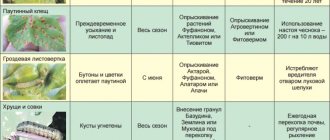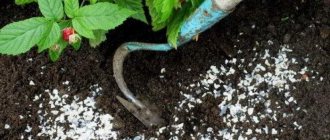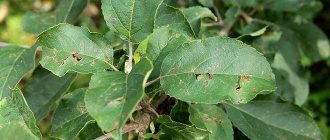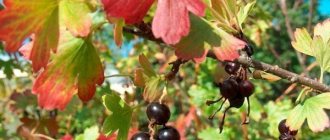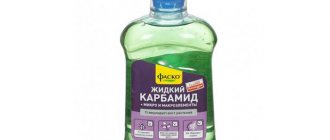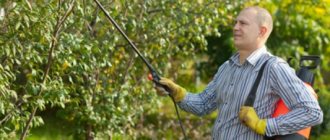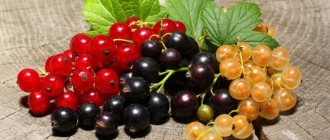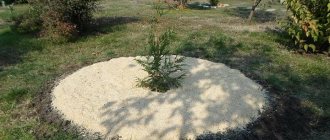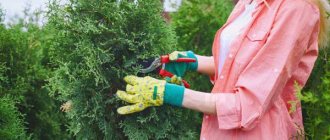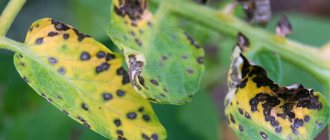Autumn is not only the time to harvest grapes, but also the time to treat the vines from diseases and pests.
Dear readers!
For you, we have created communities on social networks in which useful articles and interesting ideas are published several times a day! Subscribe and receive useful content in a convenient format! It is very important to do this before covering the crop for the winter in order to destroy pathogenic organisms that would otherwise overwinter under the cover.
Today we will talk about how to properly process grapes, which formulations are more effective, and how to choose the time for processing before sheltering for the winter.
Features of grape processing in autumn
Grapes must be treated several times for pests and diseases:
- after harvesting;
- after the complete end of the growing season. This means that the leaves should fall and the buds should close. Well, and, naturally, the harvest must be harvested.
Such complex treatment will cause maximum damage to pests and diseases, destroying most of them.
If systemic fungicides and insecticides are used for the first treatment in the fall, then copper or iron sulfate is used for the second time. These are powerful remedies for illnesses, and they have a number of limitations when used.
Treatment against diseases should be carried out after the leaves have completely fallen, the buds have closed and the vines have been pruned. This is necessary so that the plant does not receive a chemical burn from the drugs.
IMPORTANT! You cannot carry out processing before sheltering for the winter if you have not collected all the bunches!
Preparations for oidium (fungicides)
We offer you a description of the chemicals used to destroy or inhibit the development of oidium on grapes.
- Azophos is a new generation fungicide for the destruction of fungal microorganisms. Environmentally friendly product;
- Iron sulfate is a proven broad-spectrum remedy for fungal diseases, incompatible with phosphorus-based preparations;
- Copper sulfate is a copper-containing broad-spectrum contact fungicide for combating fungal diseases;
- Karatan is a contact fungicide with a narrow protective and therapeutic (medicinal) effect, suppressing the development of powdery mildew pathogens;
- Colloidal sulfur is one of the oldest pesticides; in a vapor state, it effectively destroys pathogens of fungal diseases and suppresses mites. The product is compatible with almost all other fungicides;
- Ordan is a contact-systemic fungicide to combat fungal diseases of grapes;
- Ridomil Gold is a contact-systemic fungicide to combat fungi;
- Skor is a systemic fungicide with a pronounced therapeutic and long-term preventive effect to combat scab, powdery mildew, leaf curl, late blight and other diseases;
- Tiovit Jet is an acaricide and contact fungicide to protect plants from powdery mildew and mites;
- Topaz is a systemic fungicide to combat fungal diseases;
- Horus is a local systemic fungicide used as an effective remedy against fungal diseases;
- Switch is a systemic contact means of combating fungal diseases, demonstrating effectiveness in both therapeutic and preventive treatments;
- Talendo is the latest fungicide to protect vineyards from fungal diseases. Effective only as a prophylactic agent;
- Ecosil is a growth regulator with fungicidal properties, used to increase the immunity of grapes.
It should be remembered that the last treatment with chemicals that destroy oidium pathogens is carried out no later than 60 days before harvest.
How to choose the time for autumn grape processing
First of all, it is important to understand that treatment before sheltering for winter is carried out in dry weather. In the second half of autumn there are not very many such days. Then spray so that at least 5 hours have passed since the rain, and the rain does not start earlier than 5 hours later.
Spraying with insecticidal and fungicidal compounds against diseases and pests is carried out in the fall after harvesting. In the Middle Zone, this is approximately the last ten days of September. But in the northern and southern regions, similar treatment is carried out in the middle of the month.
The second treatment is carried out in the last days of October or the first days of November. You can focus on the temperature. When the daily average reaches -2 degrees Celsius, spray with iron sulfate and cover the vine for the winter.
When is the best time to spray grapes with iron sulfate?
It is recommended to use the drug twice per season - in spring and autumn. In both cases, there is one caveat: the solution must not get on the leaves. Due to the high concentration of iron, when it comes into contact with the “living” part of plants (young shoots, foliage), it causes burns.
Therefore, in the fall, the vineyards are cultivated after the leaves fall, from mid-October. Ideally, after pruning, before covering the plants for the winter.
What preparations can be used to treat grapes in the fall?
Let's look at what preparations winegrowers use in the fall to treat the vines before the covering procedure is carried out.
inkstone
This is one of the most popular products for autumn treatment. It is effective against oidium. It is also used to combat bacterial canker and spot necrosis.
Usually a 3% solution is used (300 grams of vitriol per 10 liters of water). But for young plants they take a more gentle 1% solution, and for severely ill ones, on the contrary, increase the concentration to 5% (500 g per 10 liters of water).
The solution is used to treat not only the vine, but also the soil under the plant. This is necessary to destroy pathogens that have found shelter in the soil.
ON A NOTE. If you add 100 grams of urea, you get an excellent insecticide. Urea will burn all the larvae and eggs that the pests have laid on the grapes.
Copper sulfate
This is the second most popular preparation for treating grapes in the fall before covering.
Before winter, use a 1% solution of the product. That is, for 10 liters of water you need 100 grams of the drug.
NOTE! This drug does not dissolve well in cold water. Therefore, first prepare a suspension by mixing the drug with a small amount of hot water.
Mikal
This drug is used for treatment against oidium before sheltering for the winter.
This is a very strong fungicide, so its concentration is only a quarter of a percent (0.25%).
Do not touch the vine for a week after treatment.
Fundazol
The working solution is prepared from 10 grams of the drug and 10 liters of water. Fundazol is excellent for treating diseases in the fall. It is effective against both oidium and mildew.
The standard scheme includes 2 treatments in the fall with an interval of 3 weeks.
Urea
An unusual pest control agent is urea. The fact is that spider mites, aphids, and woodworms leave their offspring in grape shoots. But urea burns out the larvae and eggs of pests.
Treatment with this drug is carried out together with iron sulfate. That is, after the end of the growing season. Because of this, the plant does not grow green mass.
To control pests you need 300 grams of urea per bucket of water.
Fufanon
This is the most commonly used remedy for grape itch. About 3 liters of working solution are consumed per bush. The mixture is prepared from 5 ml of Fufanon and 5 liters of water.
Oidium - treatment
Measures to combat oidium
The fight against oidium is carried out by a whole range of measures, which includes agrotechnical techniques, preventive measures, the use of chemicals and folk remedies. It is advisable to carry out measures to combat oidium simultaneously with the destruction of mildew pathogens. Preventive measures against these diseases are the same, and as for treatment with chemicals, they are currently producing combination products containing both sulfur, which destroys oidium pathogens, and copper or an organic fungicide, which have a detrimental effect on mildew.
Treatment of grapes from oidium
How and with what to treat oidium on grapes? If the infection occurred during the last growing season, they begin to fight it in the current season as early as possible, but keep in mind that treating the vineyard with sulfur at temperatures below 20 ºC will not give results, since it is at this temperature that solid sulfur becomes necessary for destruction infection in vapor form. When processing grapes in hot weather, the leaves of the plant can get burned, so it is best to process them early in the morning or after 16:00.
Treatments are carried out after 10-20 days, and in total such sessions need to be carried out from 3 to 6. When spraying, a layer of sulfur should tightly cover each grape leaf. Soaked sulfur is not suitable for destroying infection.
Protection against oidium is carried out by the preparations Talendo, Karatan and Switch, which are used for preventive treatments of the vineyard, and for the treatment of already affected plants, in addition to colloidal sulfur, fungicides such as Tiovit Jet, Skor and Horus are effective.
You will not be able to avoid chemical treatment of grapes against oidium, but it is quite possible to reduce the negative effect of chemicals. This is achieved by regular preventive measures.
Oidium disease - prevention
Preventive treatments reduce the likelihood of grapes being affected by fungal diseases and cause much less harm to plants than spraying with fungicides during treatment, since the concentration of the active chemical in preventive solutions is 3-4 times weaker than in therapeutic solutions.
- Brown spot: treatment and prevention, control measures
Preventive measures begin in the fall: when preparing grapes for winter, they are treated with a solution of iron or copper sulfate, neutralizing the remains of the fungus. In early spring, even before the buds awaken, the vine is treated with Azophos solution, prepared according to the instructions. The nitrogen contained in the drug enhances the effect of copper.
In the photo: Grape bunches affected by oidium
Before flowering, the grapes are treated with a solution of two ten-gram packets of Ridomil Gold, one ampoule of Topaz and 40 drops of Ecosil in 8 liters of water. The next treatment - during the period of fruit formation - is carried out with the same solution, but instead of Ridomil, the drug Ordan is used. In the future, the grapes are sprayed against mildew and other diseases, but these treatments may well restrain the development of oidium.
Ensure good soil aeration in the vineyard and access of fresh air to each bush.
Folk methods of autumn grape processing
Some summer residents prefer to treat the vine before winter with folk remedies:
- A baking soda solution helps prevent mold growth. A working solution is prepared from 100 grams of soda and 10 liters of water.
- Quicklime solution . To protect grapes from mold, which develops well under cover, the shoots can be whitened with lime. To do this, 1 kg of quicklime is diluted in a bucket of water.
- Iodine solution helps against gray rot . To prepare a solution for spraying, dissolve half a teaspoon of iodine in 10 liters of water.
- Ash solution with laundry soap . Ash is a fairly effective remedy for downy mildew. For 10 liters of water you need 0.5 kg of ash and ½ piece of soap. The solution is infused for several hours, after which it is used to spray the bushes.
IMPORTANT! When choosing a treatment for diseases and pests, keep in mind that traditional formulations are less effective. They should be used for mild infestations or for prevention.
Which grape bushes can and cannot be processed
All grape bushes need preventive treatment before sheltering for the winter. But there are features of the procedure depending on the age of the grapes.
So for young plants, the concentration of the active substance must be reduced by at least 2 times.
On the contrary, the vine that suffered from the disease in the final season is treated with more concentrated compounds.
Grape varieties resistant to blight
Unfortunately, there are no truly oidium-resistant grape varieties, but there are some that can adequately resist not only powdery mildew, but also other fungal diseases. As we have already mentioned, European grape varieties are the most vulnerable in this regard.
- Anthracnose / Anthracnose
The variety Vostorg and its hybrids Talisman, Vostorg oval (Baklanovsky), Vostorg ideal, Podarok Zaporozhye, Timur and others have shown high resistance to diseases. Among those resistant to oidium and other fungal infections are the varieties Victoria, Kishmish Zaporozhsky, Galbena-now, Alexa, White Miracle, Muscat Velvet, Platov's Anniversary, Gift to Ukraine, Rozovy Timur, Matryoshka, Denal, Zolotoy Don, Zhavoronok, Kavkaz, Sashenka. Varieties obtained from the Vitis labrusca species have also proven themselves well: Alden, Alwood, Fredonia, Isabella large-fruited, New York Muscat, Pocklington, Supaga, Juodupe, Mars, Venus and Einseth Sidlis.
Among the grape varieties that are complexly resistant to diseases, the varieties Marinovsky, Platovsky, Crystal, Harmony, Millenium, Amethyst Novocherkassk, Lancelot, Beautiful Flora, Kishmish Klyuchikova, Pleven, Eurostandard, Bogotyanovsky, Arochny, Antoniy Velikiy and Nadezhda AZOS have the highest resistance to fungi.
When and how to treat before sheltering for the winter
The first treatment of grapes in the fall against diseases is carried out after harvesting.
Fundazol, Ridomil Gold and other similar drugs are usually used. The choice of a specific remedy largely depends on whether the grapes were sick or not.
First, prepare the working solution according to the instructions. The volume of liquid must be calculated based on the fact that up to 2 liters of fungicide are consumed for 1 average bush.
They spray not only the vine and the leaves that have not yet fallen, but also the soil under the plant. Therefore, be sure to remember to remove fallen leaves and other debris from under the bush.
The second treatment is carried out after pruning the vine. Use copper sulfate (if the vine had mildew) or iron sulfate (if the vine had oidium). Additionally add urea. The result is a mixture that destroys both pathogens and pests.
All spraying should be carried out in dry, windless weather, at least 5 hours before the start of rain.
Be sure to use personal protective equipment: mask, goggles, gloves and suit.
Spraying rules
When carrying out autumn processing of grape bushes, you must adhere to certain rules. What every winegrower needs to know:
- All work must be carried out only after the fruits have been completely removed, but before the foliage begins to fall.
- To treat bushes, you should use only a pump that is specifically designed for gardening work.
- Treatment is carried out only in the evening, and when there is no wind or rain.
- Dilute drugs only in accordance with the instructions.
- To consolidate the result, sanitation is repeated after a week.
- Before spraying grapes in the fall, it is worth finding out the full range of actions of various drugs in order to choose the most suitable one.
Important! You should also be careful about your own safety. When working with chemicals, you must wear thick clothing, rubber gloves and protect your respiratory system with a special mask or respirator.
Pump and special protection when spraying
Common mistakes
- The garbage under the grapes is not removed. Treatment will be useless, since pests and pathogens will simply hide in a pile of leaves. In addition, some of them will overwinter in the soil.
- Copper and iron sulfate are diluted in metal containers. These products must be diluted in glass or plastic containers to prevent a chemical reaction.
- No personal protective equipment is used. Fungicides and insecticides are dangerous chemicals that are harmful to health.
- Copper and iron sulfate are used for open kidneys. Because of this, the plant receives a chemical burn. Spraying with these substances against diseases is carried out on closed buds.
Answers to frequently asked questions
How to spray grapes before winter against pests?
Pests climb inside the shoots for the winter, so the use of conventional insecticides is not very effective. But urea will save you from annoying pests on grapes.
What is better to use before covering the bush in the fall, copper or iron sulfate?
In general, experienced summer residents advise using iron. Especially when paired with urea. On the other hand, copper is more effective in combating mildew.
Is it necessary to carry out treatment before covering the grapes?
Necessarily. Moreover, all existing bushes are processed. This way you will destroy most of the pests and pathogenic microorganisms that cause diseases.
Oidium disease - description
In the spring, after the shoots begin to grow, growths that lag in development can be found on the grape bushes. The leaves on them bloom curly, completely or partially covered with a grayish-white bloom. In June, this coating covers the leaves on both sides, and the tops of the shoots, inflorescences and clusters look as if they were sprinkled with flour or ash. Inflorescences affected by oidium die off, the berries dry out, and those the size of a pea burst or, if the weather is dry, also dry out. Oidium can destroy most of the grape harvest, and almost all European plant varieties are affected by the disease.
In the photo: Grape vine affected by oidium
The incubation period, that is, the time from the moment of infection to the appearance of mycelium plaque, is from 7 to 14 days. Mycelium grows best at a temperature of 25-30 ºC, but this does not mean that the disease does not develop at lower temperatures. Poor ventilation and an abundance of foliage on the bush contribute to the spread and development of oidium.
